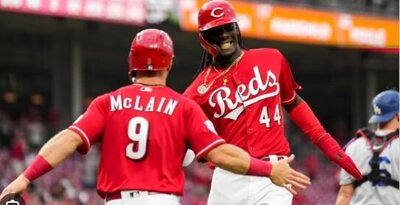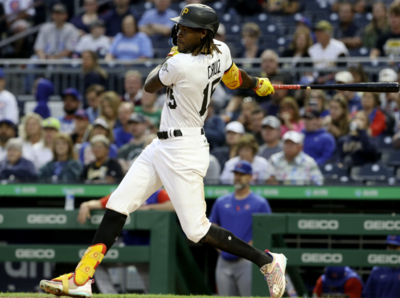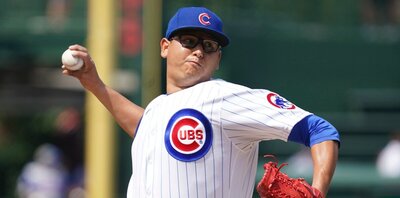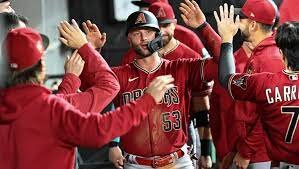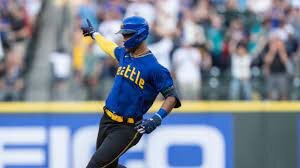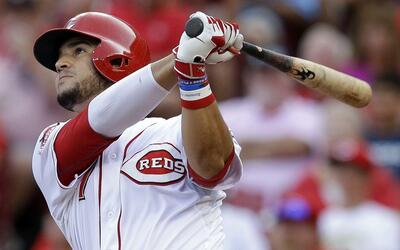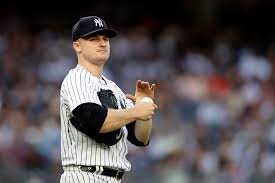Russell Branyan:
The streaky Branyan is back at it again. Branyan launched his 9th HR of the season in a 1-4 efforts and is now 8-19 over his last 5 games with 4 extra base hits. Branyan’s an all-or-nothing free swinger who has always been able to hit HR’s at a strong pace and whiff quite a few times as well. What he’s never been able to do throughout his major league career is hit for any semblance of average (.234 career hitter). So this year’s .300 average through the first 32 games is a bit surprising, especially given he’s shown no real improvement in his contact rate (just 70%). A .267 BHIP% is the culprit here which is over 50 points above his 3 year average. A normalization of this number will get Branyan back to the .240-.250 area he belongs. If you’re a Branyan owner, the power will continue to be there, but expect a fair bit of streakiness and some further downside in the BA department. Fortunately for Branyan in the past he’s had challengers to his playing time when the bad streaks come around, but in Seattle he looks pretty locked in at 1B as the only legitimate source of power on the team.
Melvin Mora:
Mora’s been a pretty nice value 3B pick the last few years as he’s average 20 HR’s, 82 Runs, and 83 RBI’s over the last 4 seasons despite relatively little attention. But at age 37 it appears father time is finally starting to catch up to Mora. He’s still posting nice run production totals, largely due to the tremendous top of the Orioles order providing plenty of base-runners, but Mora’s power has fallen off the table. He’s racked up just 3 extra base hits in his first 84 AB’s and posted just a .345 Slugging %. This is supported by a rising GB Rate (46.3%, up about 7% from his usual high 30’s GB Rates). All signs point to Mora finally losing some of the power we had been accustomed too. Fortunately some of the production will be replaced thanks to increased opportunity with a better set of table-setters in front of him, but Mora’s true power rates appear to be on a steep decline. He may hit the 80 RBI plateau, but will see drop-off in Runs and HR’s as the extra base hit rate and FB Rate decline.
Michael Young:
Young’s rebirth as a dominant fantasy player is one of the more intriguing early season stories for the feel good Rangers. After 4 consecutive years of decline in his Slugging %, Young has seen a significant reversal, nearly doubling his extra base hit rate (14.2% vs. 7.8%), more than doubling his HR Rate (4.7% vs. 1.8%), and posting a career high in his Slugging % (.588). Part of this tremendous start is the result of some good luck as a .386 BABIP and 19.8 HR/FB Rate are both out of line with his career norms, but at some point you have to give credit where credit is due. At age 33, Young’s been able to buck the declining Slugging trend and show improved power rates across the board. While some of this will regress due to some of the good luck in balls leaving the yard and BABIP, Young’s more patented 2003-2006 numbers appear to be back in vogue. Where the sudden power has come from appears unexplainable at this point, but Young owners should feel fortunate to have stumbled into it as very little coming into the season indicated this kind of start.
Kevin Slowey:
Slowey was terrific for his 2nd consecutive outing limiting the Yankees to just 2 ER’s and 7 base-runners in 7 2/3 innings, while striking out 8. Slowey’s had some awful luck early in the season with balls in play (.376 BHIP%), which has carried over into his WHIP and ERA. His peripherals still remain tremendous with a 0.73 K Rate and phenomenal .08 BB Rate. His fly ball tendencies (31% GB Rate) will leave him susceptible to the long ball but his superb command usually limits the damage. Once Slowey’s batted ball data regresses back to more moderate levels, we’ll see the same type of pitcher we saw last year (4.00 ERA or so, mid 1.1’s WHIP, .70 K/I).
Jered Weaver:
Weaver had another solid outing in a difficult environment, limiting the Rangers to just 3 ER’s over 8 innings. Weaver tired a bit at the end allowing all 3 ER’s in his final 2 innings of work, and in the end that was all it took for Weaver to pick up his 2nd loss of the season. He walked 3 and struck out 7, while allowing 6 hits in his 8 innings of work and saw his ERA and WHIP rise to 2.59 and 0.97 respectively. While Weaver’s been tremendous this year, this is an obvious opportunity to sell high on Weaver after a good outing in a difficult park. Weaver’s ratios are significantly lower than they should be thanks to a 0.82 Strand Rate and .218 BHIP%. Weaver’s more 4.00 ERA type of pitcher and nothing in that has really changed, he’s just been a bit fortunate early in the season. If you can move him for a struggling front-line pitcher like Josh Beckett or Francisco Liriano + a small piece, now would be an opportune time to pursue it.

